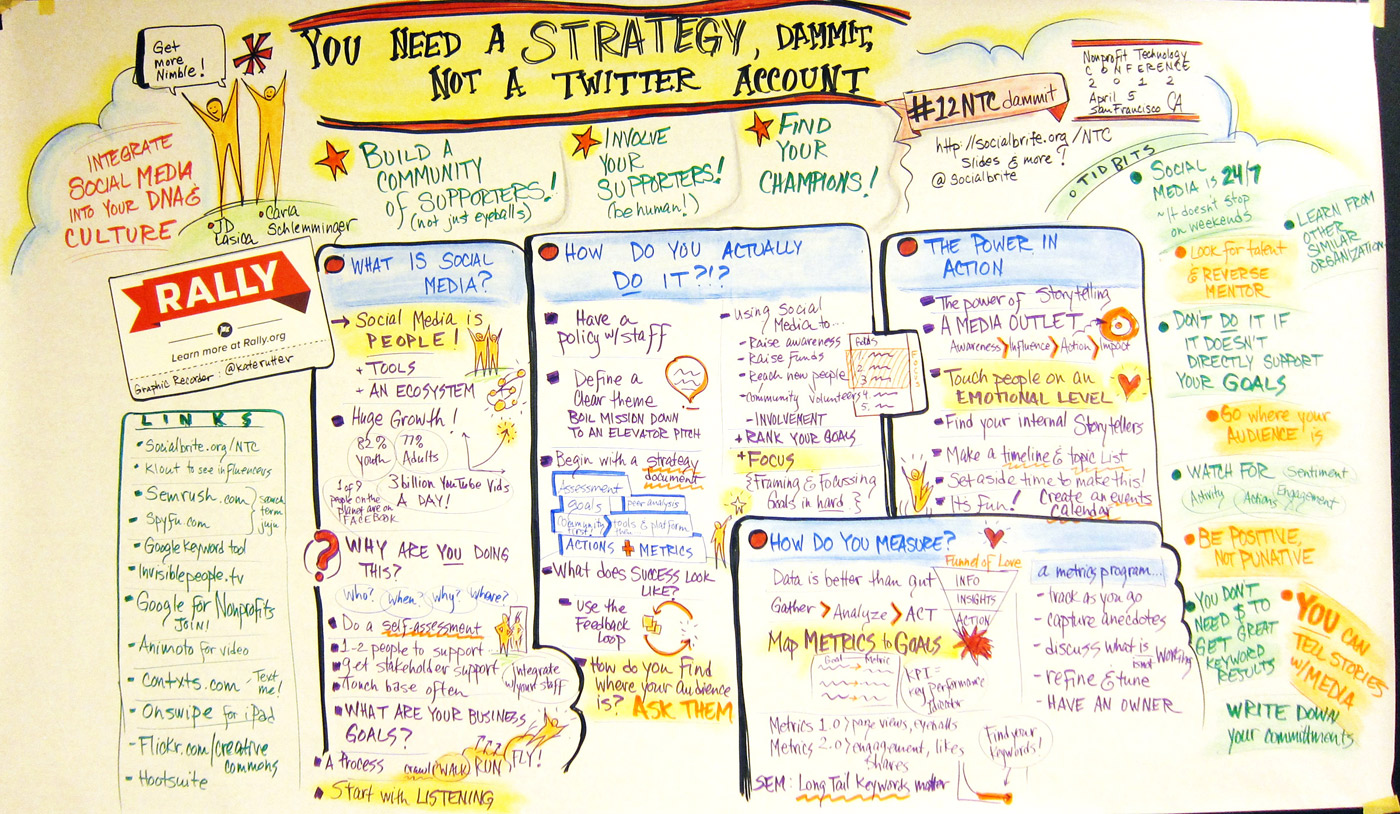
Photo by J.D. Lasica
How to maximize and follow through on your communications goals
Target audience: Nonprofits, cause organizations, foundations, NGOs, social enterprises, businesses.
 If you’re like most nonprofit communicators, you have a list of specific quarterly or yearly goals. No doubt they include growing your e-mail list, acquiring new donors and increasing engagement on your Facebook updates.
If you’re like most nonprofit communicators, you have a list of specific quarterly or yearly goals. No doubt they include growing your e-mail list, acquiring new donors and increasing engagement on your Facebook updates.
But whatever your goals are, make sure they cover these seven tips below:

Write it down
1A plan is very difficult to follow and measure if it’s not written down. Most nonprofits don’t have content strategy. And based on the limited work I’ve done, they also lack an online marketing strategy that’s written down.
Make a resolution to create written plans for each campaign throughout the year. Your plan should include stated goals, stated messaging, a strategy outline, and finally, tools and tactics. How much detail you include in this document is up to you, but at least include these elements.
Also, check out these three articles on develop a solid online marketing strategy:
Practice split-testing
2If you’re like most nonprofits, your donor retention rates are less than satisfactory. Improving this starts with fixing the places where you’re converting poorly.
- Begin by split testing your fundraising pages, if you haven’t already. Split-testing helps increase conversions by testing out variations in the content. Some typical areas to start with include headlines, images, button location, button text, button colors, and copy. Check out how the Marine Mammal Center split-tested variations of a call-to-action.
- You should also split-test email subject lines and email content. This will eventually point the way to increased open rates, click-through rates, and eventually conversion rates.
Check out this article on how split-testing raised over $100,000 for WWF.
Maximize secondary actions
3Make the most of every interaction people take with your nonprofit. For example, when people sign a petition, immediately email them to ask for a donation (says thanks first). This approach uses recency to create momentum towards a secondary call-to-action – essentially killing two birds with one stone.
In fact, maximize any webpage people see after completing a transaction (signing a petition, joining your email list, making a donation, registering for an event). Carefully consider what secondary actions make sense for each transaction. For example, if someone makes a donation, make sure they can easily share that with their friends.
See beyond the dollars
4All too often, the scope of the supporter relationship is limited to money. But donating money is only one way that they interact with you.
Supporters also share your Facebook updates, sign your petitions and pledges, and re-tweet your blog posts.
Develop a specific plan to encourage these types of actions, remembering that growing a community is like growing a garden. It takes time, care and consideration. Focus on growing your community, both in terms of numbers AND engagement.
Be useful
5It seems like all the social media experts claim that the key to success to being awesome. But what your community really needs is for you to be useful.
Being useful is much easier than trying to be awesome. Being useful is about putting the needs of your community first, like in this Facebook update from the Museum of Fine Arts:

Take risks
6New tactics and strategies for using social media sprout up every week, making “best practices” somewhat limited. In fact, I think we should change the term “best practice” to “most commonly used practice that gets average results.”
The fact is, the web and mobile are changing very fast. Those who play is safe get average results at best, while risk-takers adopt more quickly (test, fail / win, learn, repeat). Fail forward, they say.
Test and measure
7Most nonprofits are not strategically testing or measuring digital media. Yes, data is collected and stored in excel spreadsheets. But the hard questions aren’t being asked: Why are we measuring click-through rates? Why are we measuring our Facebook page fan growth?
Let your strategy dictate what should be measured. This will make your data much more useful. For example, if your goal is to convert more donors via email, then you want to test and measure conversion rates via clicks in those messages. Go back to what I said about split-testing.
Remember to breathe
If you’re like me, you need a fair amount of down time.
You need time to step back, take a breath, and take in the panoramic view of what you’re doing – in work and in life. Pace yourself and be smart about daily habits.
And try to have fun.
John Haydon delivers social web strategy solutions for “the quick, the smart, and the slightly manic.” Curious? Then visit the John Haydon blog, follow him on Twitter or leave a comment.
 This work is licensed under a Creative Commons Attribution 3.0 Unported.
This work is licensed under a Creative Commons Attribution 3.0 Unported.








